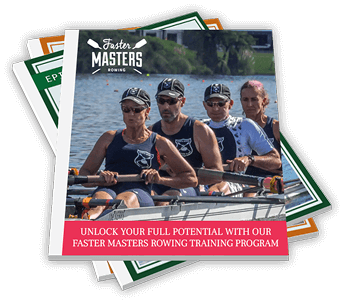Creating rowing training groups which encompass athletes of different speeds and skill levels is a big challenge for a rowing coach.
You may find different ways of doing this from setting crews comprising faster and slower athletes so the average boat speed is similar, to setting off your slowest crews first and allowing the faster ones to overtake them. Doing pieces for time not distance is another easy way to keep crews closer together.
You can do the first piece, with crews starting level, then start the second piece based on who was in front at the end. This could be as a staggered start or a time handicap from a level start.
When an athlete does not stick with the group this makes it challenging - having acceptable behaviours in the group and the coach needs to reinforce these with the group for this to work.
Timestamps to the show
04:30 This Past Week - Things we have done to advocate for masters rowing
Rebecca has launched expressions of interest for the peer-to-peer coaching clinics.
Marlene led the Functional Movement Assessment webinar/
08:40 Faster 5 Stroke power - Getting the most meters per stroke out of your boat. Strength training is important for masters in order to stimulate muscle recruitment. Hormone changes in men and women affect your muscles.
Important for developing a good rhythm contrast between drive and recovery. Easier learned with a more experienced rower.
13:30 Finding and creating appropriate training groups as a coach or organiser.
A group of single scullers - treat it as a pod that works together. Keep the group together relative to boat speed. The coach has to be strict to make people follow directions.
What to do if someone is disruptive or chooses not to join in with the group.
To get coaching stay rowing near the coach.
Three crews of different speeds and one coach - we had the 500m rule where you had to stop rowing if you got further away from the coach. We used the stationery stability drill to kill time until the others catch up.
22:00 Alternatives to a speed coach for rating. Ways to monitor your rating without using electronics.
Luka Spik says it's important to row without devices because it helps you focus on feel and rhythm.
28:00 Randall foils discussion about how they increase the load on the athlete.
What is the issue you are trying to solve using the foils? Is it keeping the drive horizontal - is it better to learn to scull properly and not use a device?
35:00 Death of a coach - how it affects you. Honouring their memory. Larry Gluckman died this week.

